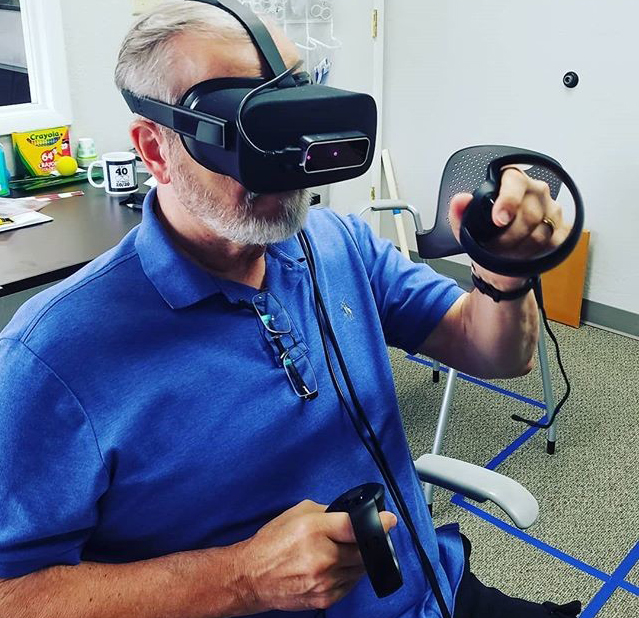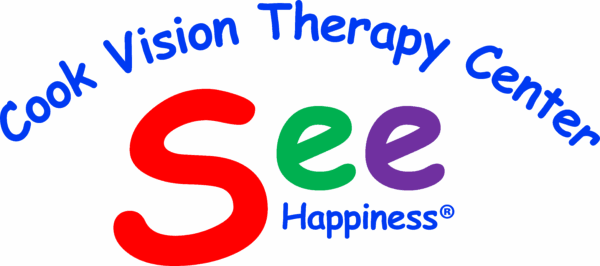Vision Therapy
What is Vision Therapy?
Briefly defined, “vision therapy” is like physical therapy for the eyes, teaching you to coordinate your eyes with each other as well as with your hands, body and brain.
In a vision therapy program, we use instruments, special lenses, and exercises to give feedback if your eyes are working correctly or incorrectly. This feedback guides you to unlearn poor seeing habits and develop correct ones. Just as when you learned to drive a car, you’ll begin by having to think about how you’re using your eyes. In time, you’ll learn to see more quickly, accurately, and comfortably on a second-nature basis.
Vision Therapy can correct and improve the 7 Key Visual Abilities.
The Fundamentals of Vision Therapy
At its core, vision therapy aims to train the eyes to work together more effectively. This process involves a combination of instruments, special lenses, and tailored exercises that provide feedback on whether the eyes are functioning correctly. Through this feedback, individuals can unlearn poor visual habits and replace them with more efficient ones.
Just as learning to drive a car requires conscious effort at first, vision therapy initially demands focused attention on eye use. Over time, however, these new habits become second nature, allowing individuals to see more quickly, accurately, and comfortably.
The Process of Vision Therapy
Vision therapy programs are personalized to meet the unique needs of each patient. Here’s a breakdown of what typically happens during a vision therapy program:
-
Assessment and Diagnosis: The journey begins with a comprehensive eye examination to identify specific visual issues. This assessment helps in creating a customized therapy plan tailored to address the patient’s unique visual challenges.
-
Customized Exercises: Based on the assessment, a series of exercises and activities are designed. These exercises might involve the use of specialized equipment such as prisms, filters, occluders, and computerized systems to enhance visual skills and processing.
-
Feedback and Adjustment: Regular feedback is a crucial component of vision therapy. As patients perform the exercises, they receive feedback that helps them understand whether their eyes are working correctly. This feedback is essential for making necessary adjustments and improvements.
-
Progress Monitoring: Throughout the therapy, progress is continuously monitored. Adjustments to the therapy plan are made based on how well the patient is responding to the exercises.
-
Skill Reinforcement: As patients improve, the exercises evolve to reinforce the new visual skills. This ensures that the improvements are maintained over time and that the new habits become second nature.
The Seven Key Visual Abilities
Vision therapy is designed to correct and enhance seven key visual abilities that are crucial for efficient and comfortable vision. These include:
-
Eye Movement Control: The ability to control the direction and speed of eye movements, crucial for activities like reading and sports.
-
Eye Teaming (Binocular Vision): The ability to coordinate both eyes to work together as a team, essential for depth perception and avoiding double vision.
-
Focusing (Accommodation): The ability to maintain clear vision at different distances, important for activities such as reading and driving.
-
Peripheral Vision: The ability to detect and respond to objects outside the direct line of sight, which is vital for overall spatial awareness and safety.
-
Depth Perception: The ability to judge distances accurately, which is critical for activities like driving, sports, and navigating the environment.
-
Visual Perception: The ability to interpret and understand visual information, necessary for reading comprehension and effective learning.
-
Hand-Eye Coordination: The ability to use visual information to guide hand movements, important for tasks such as writing, playing sports, and using tools.
Who Can Benefit from Vision Therapy?
Vision therapy can benefit individuals of all ages, from children to adults. It is particularly effective for those with:
-
Learning Difficulties: Children with visual problems that affect their ability to read and learn can see significant improvements with vision therapy. Conditions such as dyslexia and other learning disabilities often have an underlying visual component that can be addressed through therapy.
-
Sports Vision: Athletes can enhance their performance by improving their visual skills, such as reaction time, depth perception, and hand-eye coordination.
-
Strabismus (Crossed Eyes) and Amblyopia (Lazy Eye): Vision therapy is an effective non-surgical treatment for these conditions, helping to improve eye alignment and visual acuity.
-
Convergence Insufficiency: A condition where the eyes do not work together properly when looking at close objects, leading to symptoms such as eye strain, headaches, and difficulty reading.
The Impact of Vision Therapy
The benefits of vision therapy extend beyond just improved eyesight. Enhanced visual skills can lead to better academic performance, increased confidence, and a higher quality of life. For athletes, it can mean better performance and reduced risk of injury. For individuals with visual impairments, it can lead to more effective and comfortable vision in everyday activities.
In conclusion, vision therapy is a powerful tool for addressing a wide range of visual problems. By improving the coordination between the eyes and their connection to the brain and body, vision therapy helps individuals see the world more clearly and comfortably. Whether for academic, athletic, or everyday purposes, the benefits of vision therapy are profound and far-reaching.
Take the Vision Self-Assessment test.

FAQ: Vision Therapy in Marietta, GA
-
What is vision therapy and how does it help in Marietta, GA?
Vision therapy is like physical therapy for the eyes and brain, helping patients improve eye coordination, focus, and visual processing through personalized exercises and specialized equipment
-
Who can benefit from vision therapy services in Marietta?
-
How do I know if my child needs vision therapy in Marietta?
-
What happens during a vision therapy evaluation in Marietta?
-
How long does a typical vision therapy program last in Marietta?
-
Is vision therapy just for children, or can adults also benefit in Marietta?
-
Where can I find reputable vision therapy providers in Marietta, GA?
-
What conditions does vision therapy treat in Marietta, GA?
-
Can vision therapy help with reading difficulties in Marietta?
-
Do I need a referral for vision therapy in Marietta?
-
Is vision therapy covered by insurance in Marietta?
-
How often do patients attend vision therapy sessions in Marietta?
Check Out Our Resources
Dr. Cook’s Publications:
- Authored books VISUAL FITNESS and WHEN YOUR CHILD STRUGGLES.
- Published articles in top optometric journals.
- His article “Eyesight, infinity and the human heart” was voted “Best Non-Technical Article” by the Association of Optometric Editors.





